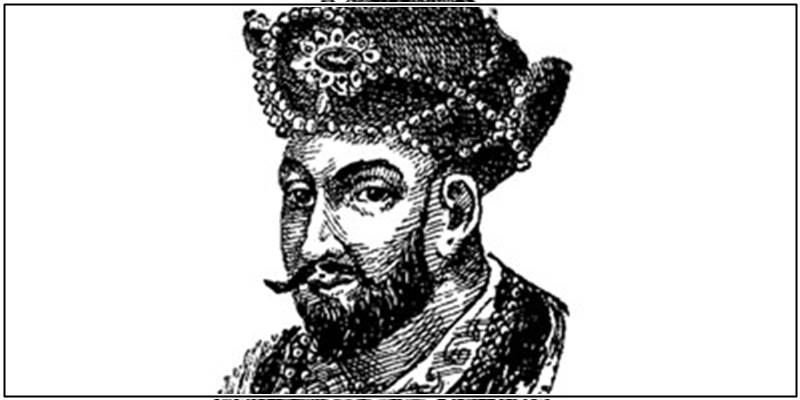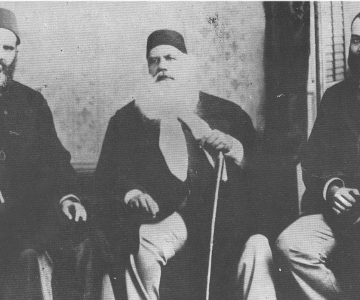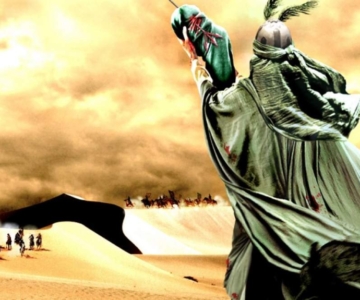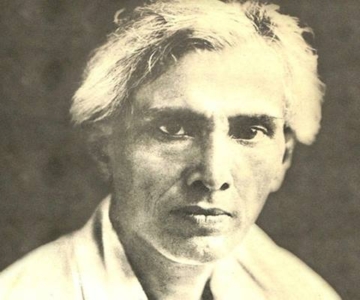Babar, the founder of Mughal dynasty in India was an unusual character of his times. A poet, writer and a free soul, he was so modern and some would say post-modern in an era otherwise categorised as medieval. I was delighted to find this piece authored by Ashfaque Naqvi.
An interesting book has landed at my table. As the title, Zaheeruddin Muhammad Babar, is about the person who laid the foundations of the Mughal Empire in the sub-continent. Written by the eminent Indian educationist, Qamar Rais, it gives a different picture of the man from what we gather about him from his self-written, Tozak-i-Babri…..
As Prof Qamar Rais says in the foreword, he had for long been studying the works of Ali Sher Nawai and such other classical poets of Uzbekistan but realized during his stay in that country that those people revered Babar more for being an intellectual and a lyrical poet. In fact, even during the Soviet era, he saw Babar’s pictures hung in most homes showing him holding a book and sunk in deep thought. As a consequence, he directed his studies in that field.
… even today, Babar is held in esteem and considered a hero both in Afghanistan and Uzbekistan. He even quotes Pandit Nehru as having said that the greatness of Babar lay not in capturing India but in capturing the hearts of Indians.
Proceeding further, the author says that among the rulers of Central Asia and India, one of the most colourful personalities was that of Zaheeruddin Babar. Even Western historians and intellectuals have spoken highly of him. Apart from being an expert in the art of warfare and conquest, he was a noted writer of Uzbeki prose.
In addition, he had a critical appreciation of poetry and fine arts. It is on record that he wrote several books on prosody, music and the art of war. He is also credited with having invented a calligraphic writing known as Khat-i-Babri. Outstanding among all those who ruled the Central Asian states, the multifarious qualities which he had were not found in the rulers of the middle ages.
Born on February 14, 1483, in the town Andejan situated in the Farghana Valley, Babar was sixth in the line of Amir Taimur’s descendent, while his mother belonged to the family of the Mongol, Changez Khan. It was the mother who took a leading part in the upbringing and nurturing of Babar. Well acquainted with the literature of Turkish, Arabic and Persian, she could melodiously render folk songs. Babar’s unusual interest in music could be because of her.
Following the sudden death of his father, Babar was declared his successor and ruler of the Farghana Valley. At the time, he was only 11 years of age. However, he had soon to face several challengers to the throne but succeeded in keeping everyone at bay. The author, however, does not feel those episodes worth consideration or mention, as he wants to concentrate on other aspects of his colourful life.
In 1995, when the author visited Andejan, the birthplace of Babar, he stayed with Zakir Jan Mashrab, the president of the Babar Foundation. The town, he says, as it appeared from the air while landing, was lost in a cluster of glorious trees. He could only see greenery all around. It tallied with the description of his motherland as given in Tozak-i-Babri.
During this visit his host first showed him a recently laid out garden which had been named after Babar and then took him to the spacious building housing the Babar Museum. A lifesize statue of Babar stood at the crossroads close to the museum while another was placed in its compound.
The museum is close to the location where Babar passed his childhood and has been erected on the site of the madressah where he received his early education. According to the Western historian, Herald Lamb, it was among the fruit shrubs of this area that Babar sat on his haunches to learn his lessons.
It becomes evident that Babar’s education ended with his initial years of life as he never again found time to indulge in it. Interestingly, he has also accused his teachers of lechery.
Lamb further writes that Babar had no difficulty in becoming fluent in three languages. He picked up old Turkish which was spoken by the villagers, while Persian was commonly spoken in the bazaars. However, he also managed to master Arabic. The author also notes that Babar’s memoirs contain no less than 412 words of Urdu-Hindi origin. He even claims the existence of a verse by Babar which is in a mixture of Urdu and Chagtai-Turkish.
The book goes further to tell us in detail about the poetic prowess of Babar. But that would be a long story and beyond the scope of this column. In fact, the second part of the book contains translations in Urdu verse of Babar’s ghazals and some other verses. These cover 42 pages. I might revert to them some other time.



